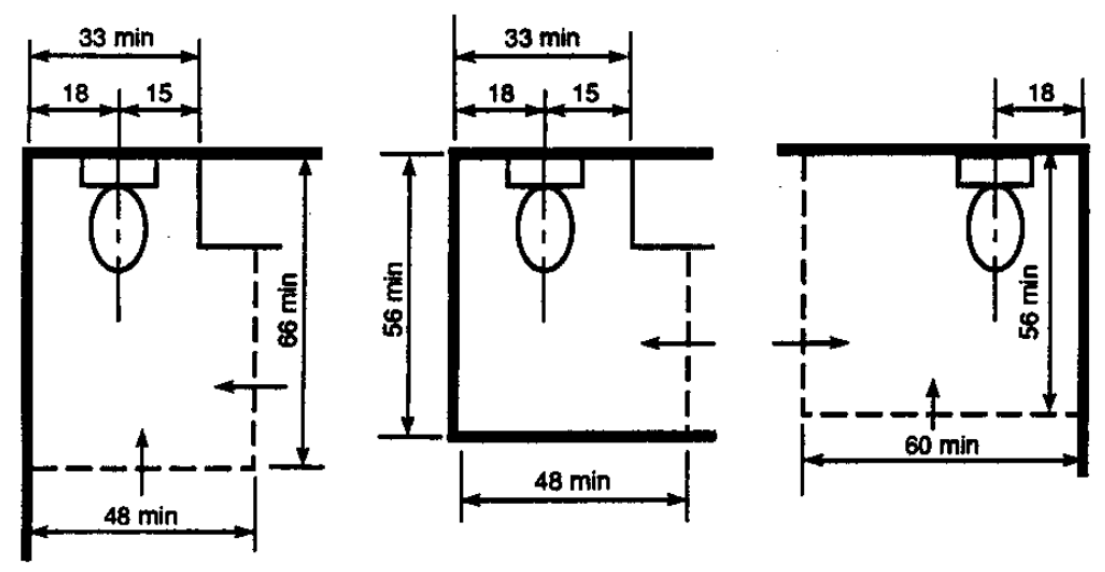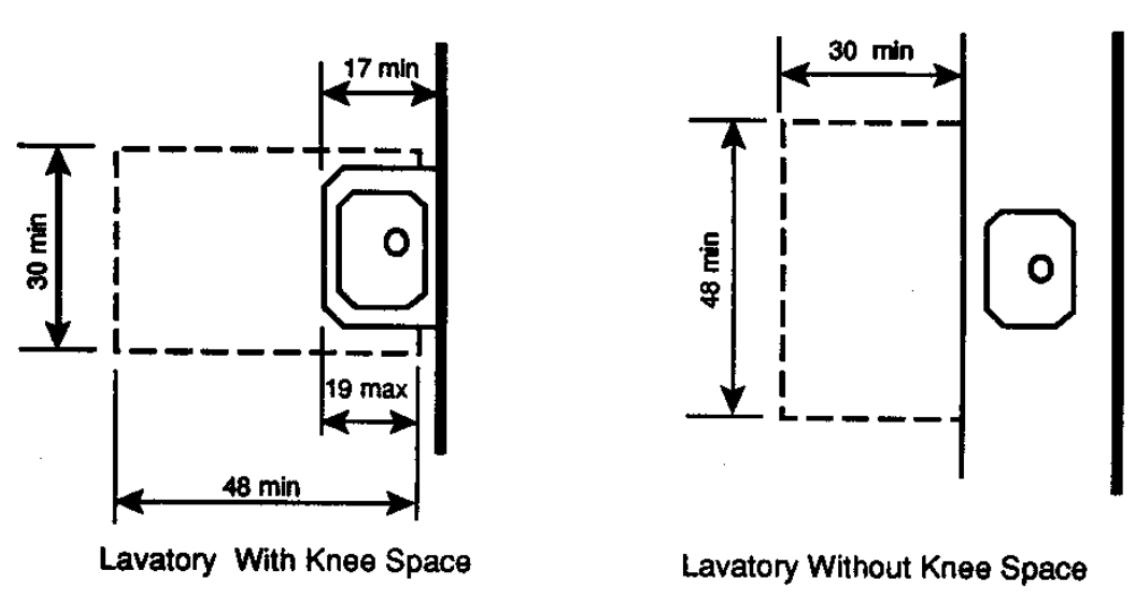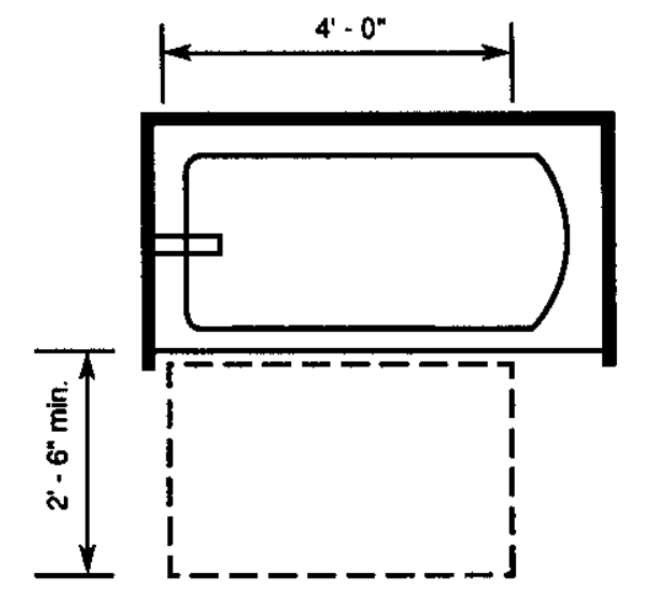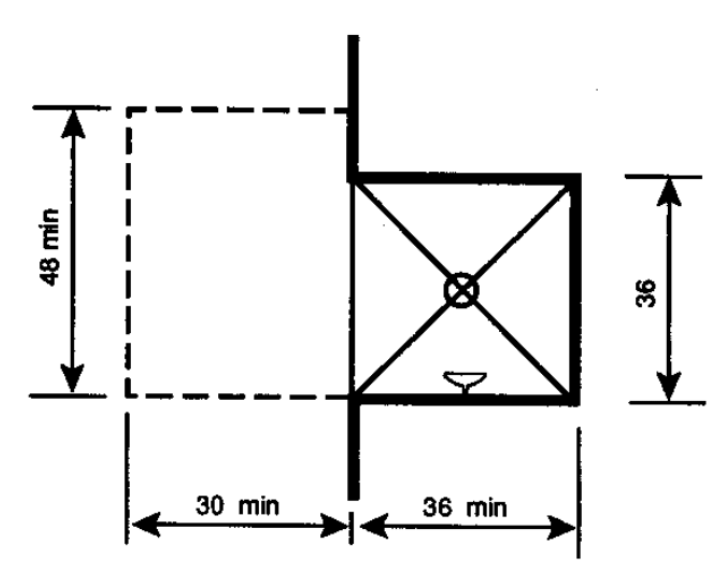(b) Bathrooms that have reinforced walls for grab bars (see Requirement 6) would meet section 100.205(c)(3)(iv) if:
Note: Clear floor space beside tub may overlap with clear floor space beneath adjacent fixtures.
(i) Where the door swings into the bathroom, there is a clear space (approximately, 2' 6" by 4'0") within the room to position a wheelchair or other mobility aid clear of the path of the door as it is closed and to permit use of fixtures. This clear space can include any kneespace and toespace available below bathroom fixtures.
(ii) Where the door swings out, a clear space is provided within the bathroom for a person using a wheelchair or other mobility aid to position the wheelchair such that the person is allowed use of fixtures. There also shall be clear space to allow persons using wheelchairs to reopen the door to exit.
(iii) When both tub and shower fixtures are provided in the bathroom, at least one is made accessible. When two or more lavatories in a bathroom are provided, at least one is made accessible.
(iv) Toilets are located within bathrooms in a manner that permit a grab bar to be installed on one side of the fixture. In locations where toilets are adjacent to walls or bathtubs, the center line of the fixture is a minimum of 1'6" from the obstacle. The other (non-grab bar) side of the toilet fixture is a minimum of 1'3" from the finished surface of adjoining walls, vanities or from the edge of a lavatory. (See Figure 7(a).)

(a) Clear Floor Space for Water Closets
Fig. 7 Clear Floor Space for Adaptable Bathrooms
(v) Vanities and lavatories are installed with the centerline of the fixture a minimum of 1'3" horizontally from an adjoining wall or fixture. The top of the fixture rim is a maximum height of 2'10" above the finished floor. If kneespace is provided below the vanity, the bottom of the apron is at least 2'3" above the floor. If provided, full kneespace (for front approach) is at least 1'5" deep. (See Figure 7(c).)

(c) Clear Floor Space at Lavatories
Fig. 7 Clear Floor Space for Adaptable Bathrooms
(vi) Bathtubs and tub/showers located in the bathroom provide a clear access aisle adjacent to the lavatory that is at least 2'6" wide and extends for a length of 4'0" (measured from the foot of the bathtub). (See Figure 8.)

Fig. 8 Alternative Specification - Clear Floor Space at Bathtub
(vii) Stall showers in the bathroom may be of any size or configuration. A minimum clear floor space 2'6" wide by 4'0" should be available outside the stall. (See Figure 7(d).) If the shower stall is the only bathing facility provided in the covered dwelling unit, or on the accessible level of a covered multistory unit, and measures a nominal 36 x 36, the shower stall must have reinforcing to allow for installation of an optional wall hung bench seat.

(d) Clear Floor Space at Shower
Fig. 7 Clear Floor Space for Adaptable Bathrooms

User Comments/Questions
Add Comment/Question